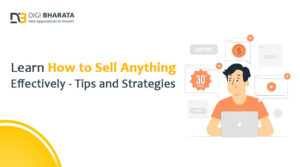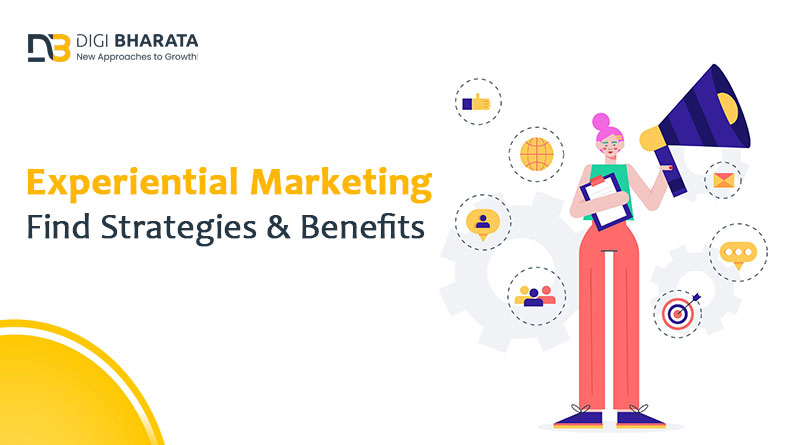In today’s ever-evolving world of digital marketing, where online advertisements and social media campaigns dominate the landscape, traditional advertising methods often fall short of capturing consumers’ attention and leaving a lasting impact.
This is where experiential marketing steps in. Experiential marketing is not just a marketing strategy; it’s an immersive journey that allows brands to connect with their audience on a deeper level.
In this blog, we’ll explore the concept of experiential marketing, its benefits, and how to effectively implement it in your marketing strategy.
Table of Contents
Understanding Experiential Marketing
What is Experiential Marketing?
Experiential marketing, also known as engagement marketing or live marketing, is a dynamic marketing strategy designed to engage consumers by creating memorable and meaningful experiences. The essence of experiential marketing lies in immersing consumers in a tangible and interactive encounter with a brand, product, or service. It goes beyond the traditional ‘talking at’ approach and focuses on the ‘engaging with’ method.
Experiential marketing aims to evoke emotions, connect on a personal level, and leave a lasting impression on consumers. It often involves live events, interactive exhibitions, product demonstrations, and other hands-on experiences.
The ultimate goal is to foster a strong emotional bond between the brand and its customers, leading to increased brand loyalty and advocacy.
The Rise of Experiential Marketing
Experiential marketing has gained significant traction in recent years, thanks to its effectiveness in the digital age. With the oversaturation of online advertisements, consumers have become increasingly ad-resistant. They are bombarded with an average of 5,000 to 10,000 marketing messages each day. As a result, traditional advertising methods have lost their impact.
Experiential marketing cuts through the noise by providing consumers with a sensory, real-world experience that captures their attention and leaves a lasting memory. It resonates with the innate human desire for meaningful and memorable interactions.
In a survey conducted by the Event Marketing Institute, 74% of consumers said they were more likely to buy products promoted through branded event experiences.
Why does experiential marketing work?
Experiential marketing works for several reasons:
- Engagement and Emotional Connection: Experiential marketing engages consumers on a deeper level, evoking emotions and creating memorable experiences. This emotional connection has the potential to foster greater brand loyalty.
- Memorability: By appealing to multiple senses and creating immersive experiences, experiential marketing makes a lasting impression on consumers. They are more likely to remember and talk about their experiences.
- Human-Centric: It aligns with the natural human desire for meaningful and memorable interactions. This approach resonates with people and helps establish authentic connections.
- Cutting through the Noise: In an age of ad saturation and ad-blocking, experiential marketing stands out by providing real-world, sensory experiences that capture consumers’ attention.
- Measurable Results: Experiential marketing campaigns are often measurable, allowing brands to track their return on investment (ROI) through metrics such as increased sales, website traffic, social media engagement, and customer feedback.
Benefits of Experiential Marketing
Building Authentic Connections
Experiential marketing allows brands to create authentic connections with their audience. By immersing consumers in a memorable experience, it enables a deeper understanding of the brand’s values, culture, and offerings. Consequently, it nurtures a feeling of trust and commitment.
Memorable Brand Experiences
The key to successful experiential marketing lies in creating memorable brand experiences. These experiences not only capture the audience’s attention but also resonate with them on an emotional level.
When customers remember your brand for the positive experiences you’ve provided, they are more likely to become loyal, repeat customers and brand advocates.
Social Media Buzz
Experiential marketing events and campaigns often lead to a significant social media buzz. When attendees share their experiences on various social platforms, it extends the reach and impact of your marketing efforts.
User-generated content, such as photos and videos, can go viral, further enhancing brand visibility and engagement.
Measurable ROI
Experiential marketing is not just about creating memorable experiences; it’s also about achieving measurable results. Brands can track the ROI of their experiential marketing campaigns through various metrics, such as increased sales, website traffic, social media engagement, and customer feedback.
Implementing Experiential Marketing in Your Strategy
Identify Your Audience
The first step in implementing experiential marketing is to identify your target audience. Understand their preferences, interests, and behavior. This knowledge will guide you in creating experiences that resonate with your audience.
Define Clear Objectives
Set clear objectives for your experiential marketing campaign. Are you aiming to boost brand visibility, boost sales, or introduce a new product to the market? Defining clear objectives is crucial for evaluating the effectiveness of your campaign.
Create Memorable Experiences
The core of experiential marketing is the creation of memorable experiences. This can be achieved through product demonstrations, interactive installations, live events, or immersive exhibitions. Make sure the experience is aligned with your brand’s values and resonates with your audience.
Leverage Technology
Technology plays a vital role in enhancing experiential marketing. Augmented reality (AR), virtual reality (VR), and interactive apps can be used to create immersive experiences that captivate the audience and leave a lasting impression.
Encourage User-Generated Content
Harness the power of user-generated content by encouraging attendees to share their experiences on social media. Create hashtags and interactive photo opportunities to facilitate social sharing. This extends the reach of your campaign and allows it to go viral.
Measure Results
After the campaign is over, it’s essential to measure the results. Analyze key performance indicators such as website traffic, social media engagement, and sales data. This data will provide valuable insights into the effectiveness of your experiential marketing efforts.
What are the 5 senses of experiential marketing?
Experiential marketing engages all five human senses to create immersive and memorable experiences:
- Sight: Visual elements play a crucial role in experiential marketing. This includes captivating visuals, product displays, interactive exhibits, and attention-grabbing designs.
- Sound: Soundscapes, music, live performances, and ambient sounds can enhance the overall experience, creating an auditory component that resonates with the audience.
- Taste: When applicable, brands may use taste as a sense to engage consumers through product sampling, food and beverage experiences, or culinary events.
- Smell: Scent marketing, or using specific scents to trigger emotions or memories, can be a powerful tool in experiential marketing. This sense is often utilized in industries such as retail and hospitality.
- Touch: The tactile aspect is crucial in experiential marketing. Interactive displays, product demonstrations, and hands-on experiences allow consumers to physically engage with the brand and its offerings.
Conclusion
Experiential marketing is a powerful strategy that can help brands break through the noise of traditional advertising and create lasting connections with their audience. By focusing on building authentic connections, creating memorable experiences, and leveraging the power of technology, brands can harness the full potential of experiential marketing.
In a world where consumers are craving meaningful interactions, experiential marketing is the key to capturing their attention and loyalty.
So, don’t just tell your brand’s story – let your audience experience it firsthand, and watch your brand flourish in the hearts and minds of your customers.




















+ There are no comments
Add yours